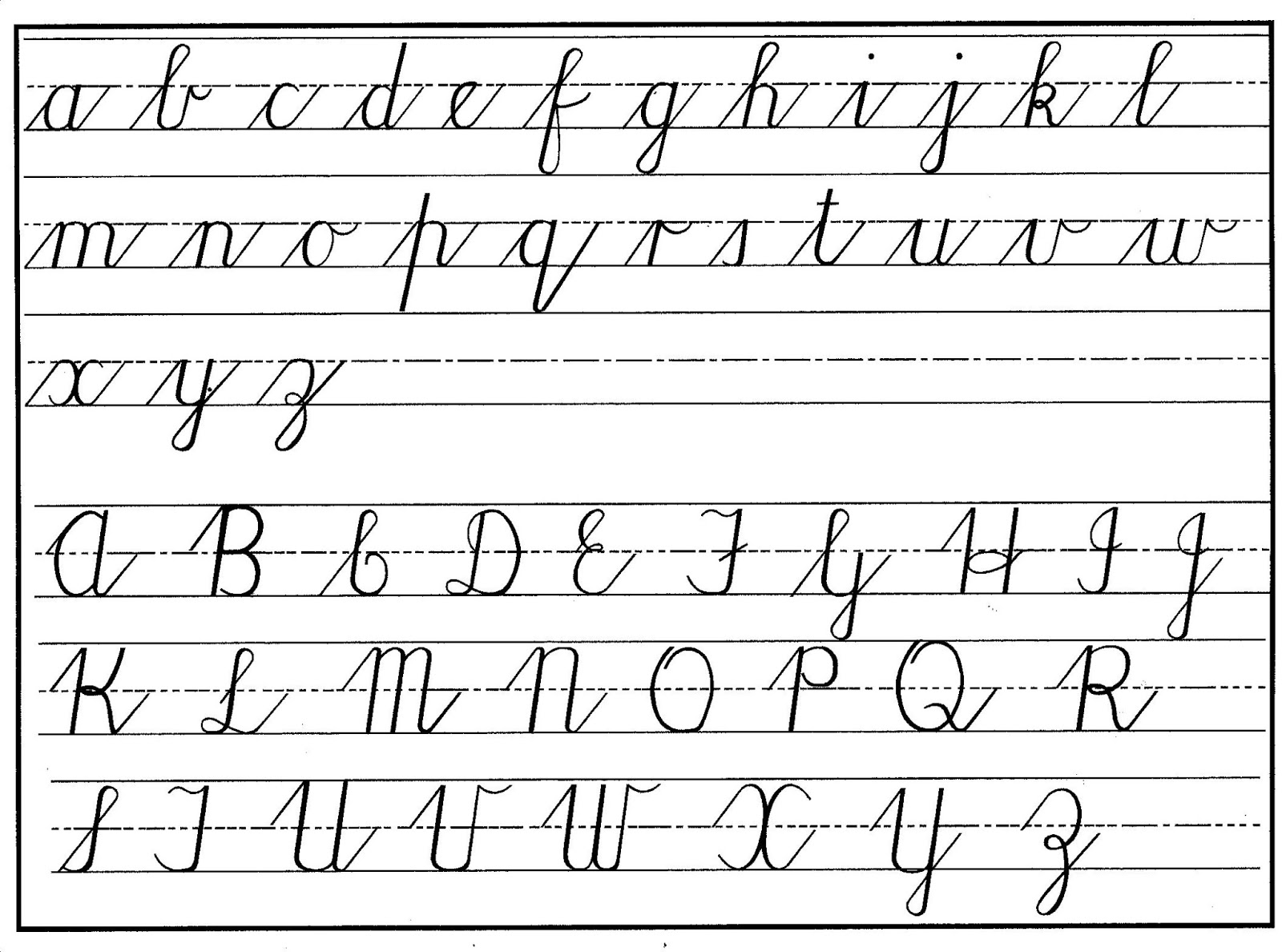

Cursive Handwriting: The Art And Science Behind Beautiful Writing
Cursive handwriting is more than just a style of writing; it is an art form that combines aesthetics with functionality. In a world that increasingly relies on digital communication, the skill of cursive writing remains a vital aspect of personal expression and educational development. This article delves into the intricacies of cursive handwriting, exploring its history, benefits, techniques, and how to effectively teach this beautiful form of writing.
As we navigate through the digital age, the relevance of cursive handwriting continues to spark debates among educators, parents, and students alike. While many argue that cursive is becoming obsolete, its advantages in cognitive development and personal expression cannot be overlooked. In this comprehensive guide, we will cover everything you need to know about cursive handwriting, ensuring that both novices and seasoned writers can appreciate and enhance their skills.
Whether you are a parent looking to teach your child cursive, a student aiming to improve your handwriting, or simply someone interested in the beauty of the written word, this article is designed to provide you with valuable insights and practical tips. Let's embark on this journey to rediscover the art of cursive handwriting!
Table of Contents
- 1. The History of Cursive Handwriting
- 2. Benefits of Cursive Handwriting
- 3. Techniques for Mastering Cursive Handwriting
- 4. Teaching Cursive Handwriting to Children
- 5. Cursive Handwriting vs. Print Writing
- 6. Modern Usage of Cursive Handwriting
- 7. Challenges in Learning Cursive Handwriting
- 8. Conclusion
1. The History of Cursive Handwriting
Cursive handwriting has a rich history that dates back centuries. Emerging in the Roman Empire, cursive script was initially developed to facilitate faster writing. The Romans used a form of cursive known as "cursive Roman," which allowed scribes to write quickly on papyrus and wax tablets.
Throughout the Middle Ages, cursive writing evolved, influenced by the need for speed and efficiency in communication. The invention of the printing press in the 15th century changed writing styles, but cursive remained popular for personal correspondence and artistic expression.
In the 19th century, the introduction of fountain pens and the emphasis on penmanship in schools led to a standardized form of cursive writing known as "Palmer Method," which focused on fluidity and elegance. This period solidified cursive handwriting's place in education and personal writing.
2. Benefits of Cursive Handwriting
Learning cursive handwriting offers numerous benefits that extend beyond mere aesthetics. Here are some key advantages:
- Cognitive Development: Writing in cursive engages different parts of the brain, enhancing memory and learning processes.
- Fine Motor Skills: Cursive writing helps improve hand-eye coordination and dexterity, which are essential for young children.
- Personal Expression: Cursive handwriting allows individuals to develop a unique style, reflecting their personality and creativity.
- Reading Skills: Familiarity with cursive can aid in reading historical documents and personal letters.
3. Techniques for Mastering Cursive Handwriting
To master cursive handwriting, one must focus on specific techniques that enhance fluidity and legibility:
3.1 Understanding Letter Formation
Each letter in cursive has a unique formation that connects seamlessly to the next. Practicing individual letters in isolation before combining them into words is essential for beginners.
3.2 Consistent Practice
Like any skill, regular practice is crucial for improvement. Set aside dedicated time each day to practice writing in cursive, gradually increasing the complexity of the words and sentences.
3.3 Using Guidelines
Writing on lined paper helps maintain uniformity in size and slant. Consider using special cursive handwriting worksheets designed for practice.
4. Teaching Cursive Handwriting to Children
Teaching cursive handwriting to children can be a rewarding experience. Here are some effective strategies:
- Start with the Basics: Introduce the alphabet individually, focusing on correct letter formation.
- Incorporate Fun Activities: Use games and creative exercises to make learning cursive enjoyable.
- Offer Positive Reinforcement: Encourage progress and celebrate achievements to build confidence.
- Utilize Technology: Consider using educational apps that focus on cursive writing skills.
5. Cursive Handwriting vs. Print Writing
While both cursive and print writing serve the same purpose of communication, they have distinct differences:
- Speed: Cursive writing is generally faster due to its connected letters.
- Legibility: Print writing is often clearer for those unfamiliar with cursive.
- Style: Cursive allows for more personal expression, while print is more standardized.
6. Modern Usage of Cursive Handwriting
Despite the digital age, cursive handwriting maintains a presence in various aspects of life:
- Personal Correspondence: Handwritten letters and cards convey thoughtfulness and sincerity.
- Artistic Expression: Calligraphy and hand lettering have seen a resurgence, emphasizing cursive styles.
- Education: Many schools still include cursive writing in their curriculum, recognizing its benefits.
7. Challenges in Learning Cursive Handwriting
While learning cursive can be enjoyable, it may also present challenges:
- Frustration with Fluidity: Many beginners struggle with the fluid motion required for cursive writing.
- Inconsistent Practice: Lack of regular practice can hinder progress and retention of skills.
- Modern Distractions: The prevalence of digital communication may diminish motivation to learn cursive.
8. Conclusion
In conclusion, cursive handwriting is a valuable skill that offers numerous cognitive and personal benefits. By understanding its history, practicing techniques, and teaching it effectively, individuals can appreciate the art of cursive writing. As we navigate through an increasingly digital landscape, let us not forget the beauty and significance of putting pen to paper. Start practicing today and rediscover the joy of cursive handwriting!
We invite you to share your thoughts on cursive handwriting in the comments below. If you found this article helpful, please consider sharing it with others or exploring more articles on our site!
Thank you for reading, and we look forward to seeing you again soon!
Understanding Demoralization: Causes, Effects, And Solutions
What Would Happen If An Entire State Lost Power?
Dread Locks: The Ultimate Guide To Understanding And Caring For Your Locs


